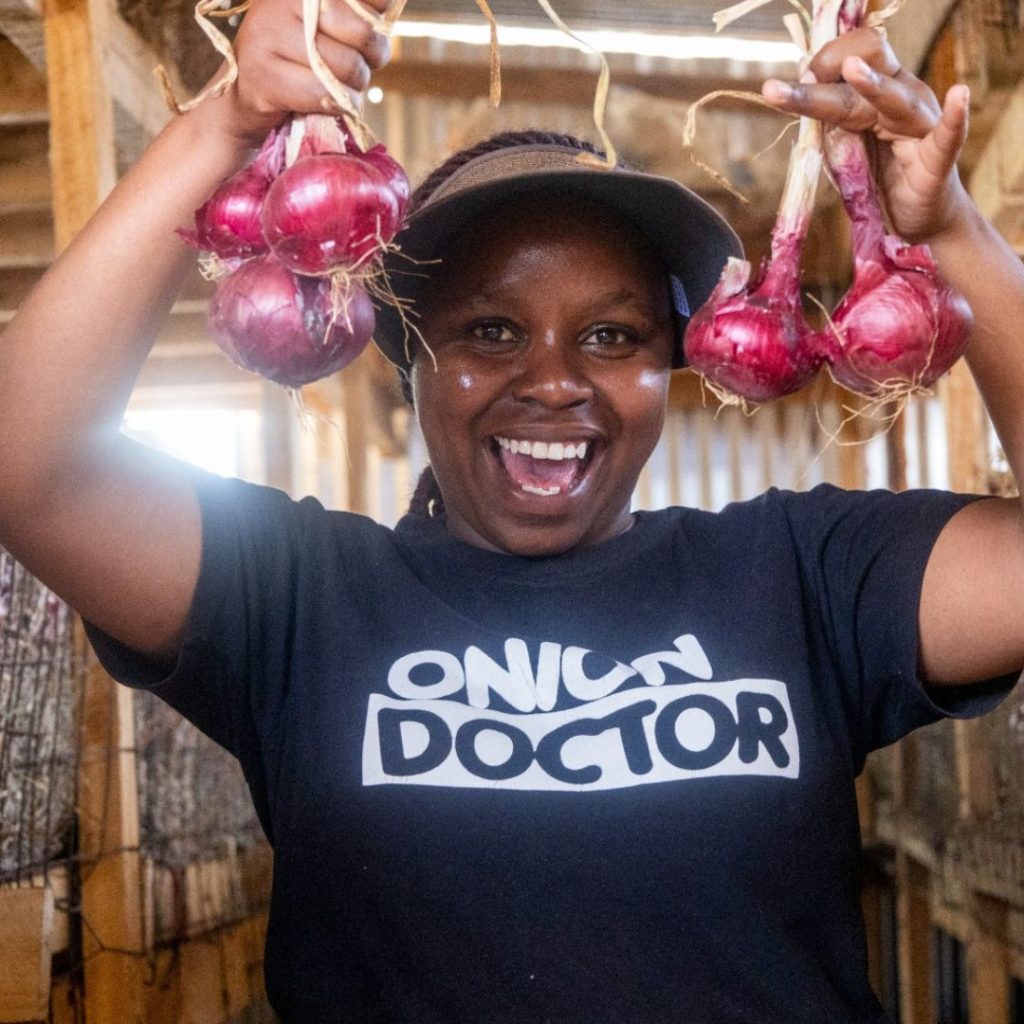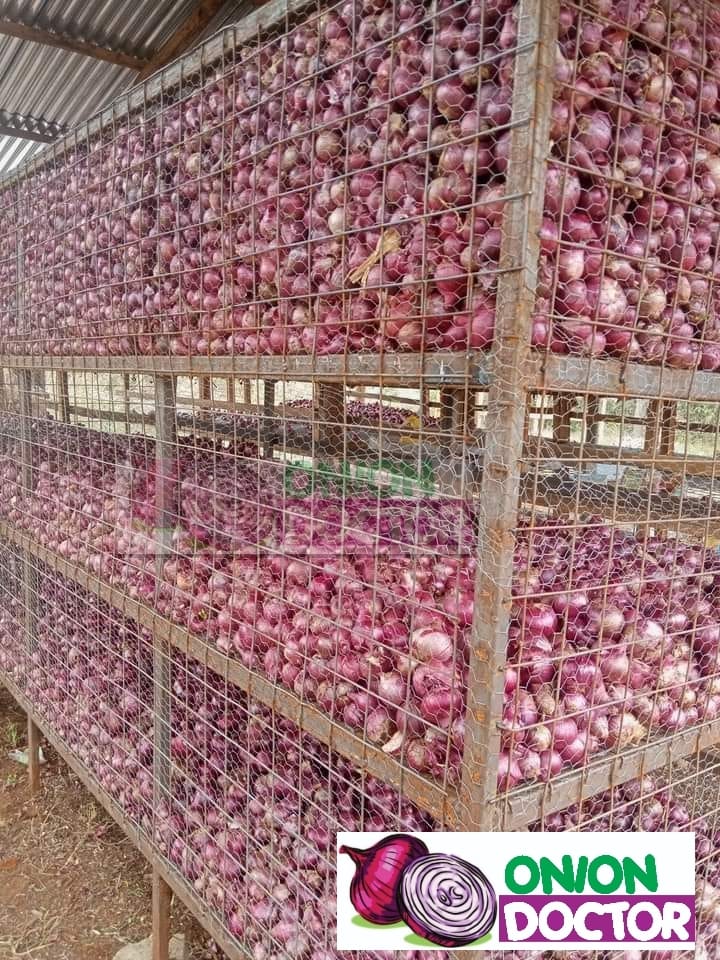Welcome to the world of onion farming in Kenya, where the vibrant fields of Nyeri, Nakuru, and Kieni yield some of the most sought-after bulbs in East Africa! At Onion Doctor, we are passionate about empowering farmers to excel in onion farming in Kenya, ensuring bountiful harvests and top-quality produce. Whether you are a seasoned grower or starting your journey in onion farming in Kenya, mastering the art of harvesting and post-harvesting handling is key to maximizing profits and minimizing losses. Onion Farming in Kenya is a lucrative venture, but it demands precision, especially during the critical stages of harvesting and storage. In this blog, we will dive deep into the best practices for harvesting techniques tailored to the unique challenges of onion farming in Kenya. Let us unlock the secrets to thriving in onion farming in Kenya with Onion Doctor`s expert insights!

IMPORTANCE OF HARVESTING IN ONION FARMING
- Optimal Harvest Timing: Onions should be harvested when 70–80% of the tops have fallen over and turned yellow or brown. This indicates maturity and readiness for harvest.
- Proper Harvesting Techniques: Ceasing irrigation 1–2 weeks before harvest helps in curing. Onions should be gently pulled or loosened with tools to avoid bruising. After harvesting, they are laid out with tops covering the bulbs to prevent sunscald.
- Preventing Mechanical Damage: Careful handling during harvesting prevents cuts and bruises, which can lead to rot and reduce market value.
IMPORTANCE OF POST-HARVEST HANDLING IN ONION FARMING
- Curing: Curing involves drying the onions to remove excess moisture, which is essential for long-term storage. This can be done in the field during dry weather or in a well-ventilated area to protect from rain. Proper curing prevents moisture loss and disease attack.
- Sorting and Grading: Post-harvest, onions should be sorted to remove damaged, diseased, or undersized bulbs. Grading by size and quality ensures uniformity, meeting market standards and fetching better prices.
- Storage: Proper storage conditions are vital. Onions should be stored in a cool, dry, and well-ventilated area to prevent sprouting and rotting. Ideal storage temperatures range between 0–4°C with relative humidity of 65–70%.
- Packaging and Transportation: Using appropriate containers like mesh bags or wooden crates with good ventilation minimizes damage during transport. Gentle handling during loading and unloading reduces bruising and spoilage
Benefits of Proper Harvesting and Post-Harvest Handling
- Extended Shelf Life: Proper curing and storage can extend the shelf life of onions up to 6 months.
- Reduced Post-Harvest Losses: Implementing best practices minimizes losses due to rot, sprouting, and mechanical damage.
- Enhanced Market Value: High-quality, well-graded onions meet market standards, leading to better pricing and increased income for farmers.
HARVESTING TECHNIQUES FOR ONION FARMING IN KENYA
Harvesting onions requires care to avoid damaging the bulbs, which can reduce shelf life. In onion farming in Kenya, manual harvesting is preferred for its precision, especially for smallholder farmers. Here is a step-to -step guide:
- Loosen the Soil: Use a garden fork or shovel to gently lift the soil around the onions. This prevents bruising or cutting the bulbs during pulling.
- Pull the Bulbs: Grasp the base of the foliage and gently pull the onions from the soil. For spring onions, ensure the stem are intact, as they are often sold with leaves.
- Handle with Care: Avoid dropping or throwing onions, as physical damage can invite diseases like Botrytis bulb rot, a common issue in onion farming.
- Field Curing: If the weather is dry, leave the onions in the field with leaves partially covering the bulbs to prevent sunburn. This initial curing, lasting 3-4 days, helps dry the neck and outer layers, sealing the bulb against infections

POST- HARVEST HANDLING: CURING FOR QUALITY
Curing is the backbone of post- harvest handling in onion farming in Kenya. It extends shelf life and preserves the quality that makes Kenyan onions, so desirable. Here is how to do it right:
- Field Curing( Dry Weather): In dry conditions, spread onions in rows in the field for 3-4 days with leaves partially covering the bulbs to protect against sunburns. This closes the neck reducing the risk of bulb infection.
- Shade Curing( Wet Weather): If harvesting during the rainy season, moves onions to a well-ventilated shed for 2-3 weeks. Ensure good air circulation to dry the outer layers completely. Use racks or hang onions in bunches to maximize airflow.
- Trimming: Once cured, trim the leaves, leaving a 2-3cm neck attached to the bulb. This helps seal the bulb and prevents moisture entry.
SORTING AND GRADING: PREPARE FOR THE MARKET
After curing, sorting and grading are essential to meet market standards in onion farming in Kenya. Kenyan consumers prefer mid-sized onions for household use, as they are easier to use in one meal. Follow these steps:
- Sorting: Remove damage, decayed, or thick-necked onions, as these are prone to spoilage. Thick necks often indicate immature bulbs that will not store well.
- Grading: Separate onions into larger, medium, and small sizes.
- Packaging: Use well-ventilated containers like mesh bags or wooden crates to prevent moisture build up. Avoid plastic bags, which trap moisture and promote rot.
STORAGE: KEEPING ONIONS FRESH FOR MONTHS
Proper storage is critical to maintaining onion quality, especially for bulb onions, which are prized for their long shelf life in onion farming in Kenya. Here is how to store onions effectively:
- Cool ,Dry Conditions: Store onions in a cool, dry and well ventilated area to prevent sprouting or rotting. Traditional structures like heaps or ventilated sheds are common in Kenya.
- Avoid Moisture: Excess moisture is the enemy of onion storage. Ensure storage areas are free from dampness, and avoid stacking onions too tightly to allow airflow.
- Regular Inspection: Check stored onions weekly for signs of rot or sprouting. Remove affected bulbs immediately to prevent spoilage from spreading

TRANSPORTING: GETTING ONIONS TO MARKET
Transporting onions without compromising quality is a challenge in onion farming in Kenya, especially for long-distance markets like Nairobi or Mombasa. Follow these best practices:
- Use Ventilated Containers: opt for wooden crates ,plastic crates, or mesh bags to ensure airflow during transit. This prevents moisture build up and rot.
- Maintain Cool Temperatures: Transport onions at cool temperatures to avoid sprouting or spoilage. For long-distance transport, consider refrigerated trucks, especially for export markets.
- Handle Gently: Avoid rough handling during loading and unloading to prevent bruising which can lead to fungal infections.

CHALLENGES IN HARVESTING AND POST HARVEST HANDLING IN ONION FARMING.
- Excess Rainfall: Too much rain during harvest can waterlog bulbs, leading to rot. Focus on dry-season harvesting or use raised beds to improve drainage.
- Pest and Diseases: Post- harvest losses can occur due to pests like thrips or diseases like Botrytis bulb rot and Downey Mildew. Proper curing and storage in ventilated conditions help mitigate these risks.
- Market Timing: Onion prices in Kenya spikes after the long rains in March due to low supply from Tanzania. Harvesting in January-February allows farmers to capitalize on high prices.
Contact us for: Onion seedlings, Garlic seedlings, Germinated garlic cloves, Farm planning services, Soil testing, training on onion and garlic growing, Drip irrigation installation and maintenance, Agronomic support, Onion and Garlic value pack and Farm management. For free consultation, placing orders or booking a visit with an agronomist, please contact us via Call or what’s app +254703982228, Email: Info@oniondoctor.co.ke. You can also check out our social media handles for daily updates on TikTok: https://www.tiktok.com/@oniondoctorke?_t=ZM-8wmsTu0qumO&_r=1 Instagram: https://www.instagram.com/oniondoctorke?igsh=MTVoaHF3aWUydTJzaQ==Facebook:https://www.facebook.com/share/16SwgYn2dG/ Youtube:https://youtube.com/@oniondoctorke?si=u5Jnd-r0qU9UDYqL and Twitter: https://x.com/OnionDoctorKe?t=FR3JXlS_oN1vjjUgAtfyzg&s=09